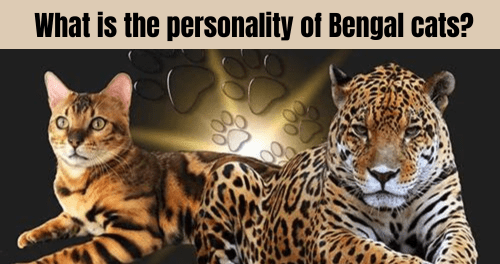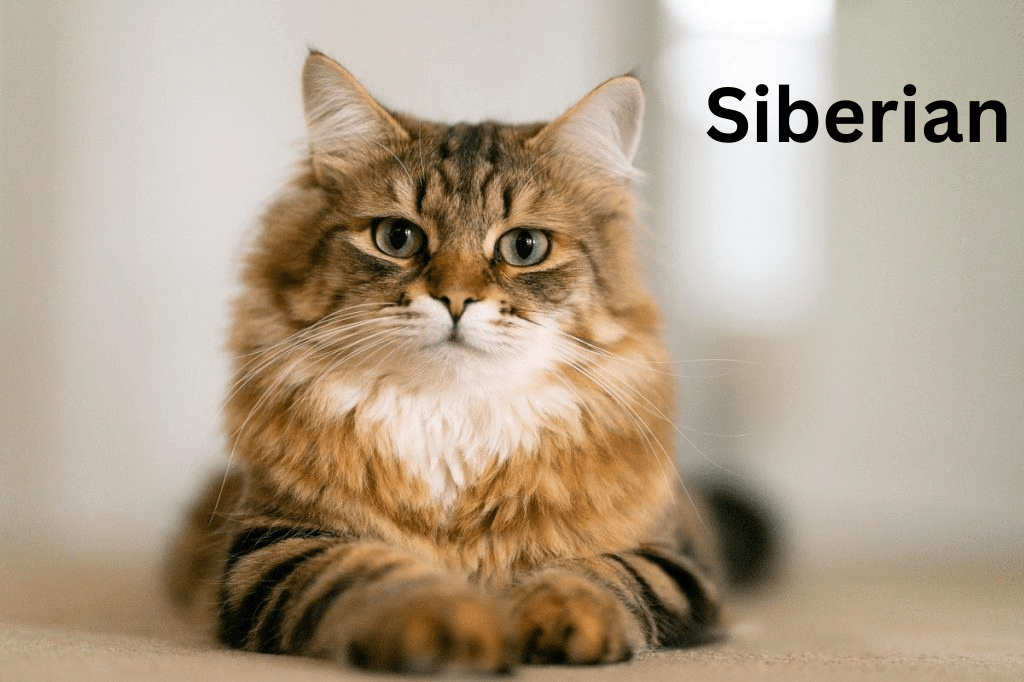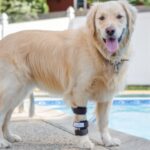If you love cats but suffer from allergies, you may have wondered if any cat breeds are less likely to trigger your symptoms. Are Bengal cats hypoallergenic? One of the most popular and exotic cat breeds, the Bengal, is often claimed to be hypoallergenic.
But what does that mean, and is it true? In this article, we will explore the facts and myths about Bengal cats and allergies, and give you some tips on how to live with a Bengal cat if you have allergies.
Contents
Are Bengal Cats Hypoallergenic?
The term hypoallergenic means “relatively unlikely to cause an allergic reaction”. It does not mean “allergy-free”. Therefore, when we say that Bengal cats are hypoallergenic, we mean that they are less likely to cause allergies than other cat breeds, but not that they are completely safe for people with allergies.
There are several reasons why Bengal cats may be hypoallergenic. One is that they have a short, pelt-like coat that sheds less than other cats. This means that they release less Fel d 1 into the environment.
Another reason is that they tend to groom themselves less than other cats, which reduces the amount of saliva and dander on their fur. Some sources also claim that Bengal cats produce less Fel d 1 than other cats, but this has not been scientifically proven.
However, these factors do not guarantee that Bengal cats will not cause any allergic reactions. Every cat is different, and every person is different. Some people may be more sensitive to Fel d 1 than others, and some Bengal cats may produce more Fel d 1 than others. Therefore, the only way to know for sure if you are allergic to a Bengal cat is to spend some time with one and see how you react.
What Causes Cat Allergies?
Before we dive into the specifics of Bengal cats, let’s first understand what causes cat allergies in the first place. Contrary to popular belief, it’s not the cat’s fur that causes allergies, but a protein called Fel d 1. This protein is found in the cat’s saliva, urine, skin, and dander (dead skin cells).
When cats groom themselves, they spread this protein onto their fur, which then sheds and becomes airborne. When people inhale or touch this protein, they may experience allergic reactions such as sneezing, itching, watery eyes, runny nose, and asthma.
How to Live with a Bengal Cat If You Have Allergies
If you have cat allergies and still want to adopt a Bengal cat, there are some steps you can take to reduce your exposure to Fel d 1 and minimize your symptoms. Here are some tips:
- Choose a female or a neutered male Bengal cat. They tend to produce less Fel d 1 than intact males.
- Keep your Bengal cat out of your bedroom and other areas where you spend a lot of time. This will limit the amount of allergens in your breathing space.
- Clean your home regularly and thoroughly. Vacuum, dust, and mop the floors, furniture, and curtains to remove any cat hair and dander. Use a HEPA filter to trap the allergens in the air.
- Wash your hands and clothes after touching or playing with your Bengal cat. This will prevent you from transferring the allergens to your face or other parts of your body.
- Brush your Bengal cat regularly to remove any loose hair and dander. Do this outside or in a well-ventilated area, and wear a mask and gloves. Alternatively, ask someone who is not allergic to do it for you.
- Bathe your Bengal cat occasionally to wash off any saliva and dander from their fur. Use a mild, hypoallergenic shampoo and rinse well. Be careful not to overdo it, as this may dry out their skin and cause more dander.
- Consult your doctor or allergist about taking medication or getting immunotherapy to treat your allergies. They may prescribe antihistamines, nasal sprays, eye drops, or other drugs to relieve your symptoms. Immunotherapy involves getting injections or drops of small doses of the allergen to gradually desensitize your immune system.
Suggested: Why Is My Cat Small?
How To Care for Your Cross-Eyed Ragdoll Cat
What is the personality of Bengal cats?
Bengal cats are a cross between the Asian leopard cat and a domesticated cat, with exotic looks and a playful, active, and intelligent personality. They are very curious, vocal, social, and energetic, and they need a lot of stimulation and attention from their owners.
They also tend to be very affectionate and loyal, and they enjoy learning tricks and playing games. Bengal cats are not suitable for everyone, as they can be demanding and mischievous, and they may not get along well with other pets or children.
They also require a high-quality diet that is rich in meat, and regular grooming to keep their coat healthy and shiny. If you are looking for a cat that is more like a dog than a cat, and you are willing to provide the care and attention that a Bengal cat needs, then you may enjoy having this breed as a companion.

Do Bengal Cats Shed a Lot?
Bengal cats are known for their exotic and beautiful appearance, but do they shed a lot? The answer is no, Bengal cats do not shed a lot compared to other cat breeds. This is because they have a short, pelt-like coat that is dense and smooth.
Their fur does not have an undercoat, which means that they shed less hair and dander than cats with longer or thicker coats. However, this does not mean that Bengal cats are completely shed-free. They still lose some hair and dander throughout the year, especially during the seasonal changes.
Therefore, if you own a Bengal cat, you should still brush them regularly to remove any loose hair and dander and keep your home clean and free of allergens. This will not only benefit your cat’s health and appearance but also your own, especially if you have allergies.
What Are the Disadvantages of Bengal Cats?
Bengal cats are one of the most popular and sought-after cat breeds in the world and for good reasons. They are intelligent, playful, loyal, and stunning to look at. However, like any other cat breed, they also have some disadvantages that potential owners should be aware of before adopting one. Here are some of the common drawbacks of Bengal cats:
- They are expensive. Bengal cats are not cheap to buy or maintain. They are a hybrid breed that requires careful breeding and genetic testing to ensure their health and quality. They also need high-quality food, regular vet visits, and proper grooming to keep them in good shape. Depending on the breeder, the quality, and the generation of the cat, a Bengal cat can cost anywhere from $500 to $5000 or more.
- They are energetic. Bengal cats are not couch potatoes. They are very active, curious, and adventurous cats that need a lot of stimulation and exercise. They love to climb, jump, run, and explore their surroundings. They also enjoy playing with toys, puzzles, and interactive games. If they do not get enough physical and mental activity, they can become bored, frustrated, and destructive. Therefore, Bengal cat owners need to provide them with a spacious and enriching environment and spend a lot of time and attention on them.
- They are vocal. Bengal cats are not quiet cats. They have a loud and distinctive voice that they use to communicate with their owners and express their needs and feelings. They can meow, chirp, growl, and yowl for various reasons, such as hunger, boredom, excitement, or displeasure. Some people may find their vocalizations cute and endearing, while others may find them annoying and disruptive. Therefore, Bengal cat owners need to be prepared to deal with their noise level and learn to understand their signals.
Top 10 Hypoallergenic Cats
If you love cats but suffer from allergies, you may think that you can never own a furry friend. However, some cat breeds are less likely to trigger allergies than others. These are called hypoallergenic cats, which means that they produce less of the allergenic protein Fel d 1 in their saliva, urine, and dander.
While no cat is 100% allergen-free, some breeds may be more suitable for people with mild to moderate cat allergies. Here are the top 10 hypoallergenic cat breeds, according to various sources.
- Balinese: This breed is similar to the Siamese but with a longer coat and a plumed tail. Despite its long hair, the Balinese sheds very little and has lower levels of Fel d 1 than many other cats.
- Cornish Rex: This breed has a short, curly coat that only consists of a soft undercoat. The Cornish Rex does not have the topcoat or guard hairs that most cats have, which means that it sheds less dander and hair.
- Devon Rex: This breed is similar to the Cornish Rex but with a wavier coat and larger ears. The Devon Rex also has a very fine undercoat and no topcoat, which reduces the amount of shedding and allergens.
- Siberian: This breed has a thick, fluffy coat that may seem like a nightmare for allergy sufferers, but surprisingly, Siberian has lower levels of Fel d 1 than many other breeds. Some people even claim that the Siberian coat has a natural anti-allergen quality that neutralizes the protein.

- Russian Blue: This breed has a short, dense coat that is known for its silvery-blue color. The Russian Blue produces less Fel d 1 than most cats, and also sheds very little, making it a good choice for people with allergies.
- Bengal: This breed is a hybrid of a domestic cat and an Asian leopard cat, which gives it a wild and exotic appearance. The Bengal has a short, pelt-like coat that sheds minimally and has less Fel d 1 than many other cats.
- Colorpoint Shorthair: This breed is a variation of the Siamese but with different color patterns on the points (ears, tail, face, and feet). The Colorpoint Shorthair has a short, fine coat that sheds very little and has lower levels of Fel d 1 than many other cats.
- Burmese: This breed has a short, glossy coat that comes in various colors, such as brown, blue, red, and lilac. The Burmese sheds very little and has lower levels of Fel d 1 than many other cats.
- Siamese: This breed is one of the most popular and recognizable cat breeds, with its pointed color pattern and blue eyes. The Siamese has a short, sleek coat that sheds very little and has lower levels of Fel d 1 than many other cats.
- Ocicat: This breed is a cross between a Siamese, an Abyssinian, and an American Shorthair, which gives it a spotted coat that resembles a wild cat. The Ocicat has a short, smooth coat that sheds very little and has lower levels of Fel d 1 than many other cats.
These are some of the best cat breeds for people with allergies, but they are not guaranteed to be allergy-free. Before adopting any cat, you should always consult with your doctor and spend some time with the cat to see how you react. You should also take measures to reduce the allergens in your home, such as cleaning regularly, washing your hands after touching the cat, and keeping the cat out of your bedroom. With proper care and precautions, you may be able to enjoy the companionship of a hypoallergenic cat.
Conclusion
Bengal cats are beautiful, intelligent, and playful animals that can make wonderful companions for cat lovers. Are Bengal cats hypoallergenic? However, they are not completely allergy-free, and may still cause allergic reactions in some people.
If you have cat allergies and want to adopt a Bengal cat, you should first test your tolerance to them and then take measures to reduce your exposure to their allergens. With proper care and management, you may be able to enjoy living with a Bengal cat without compromising your health.




